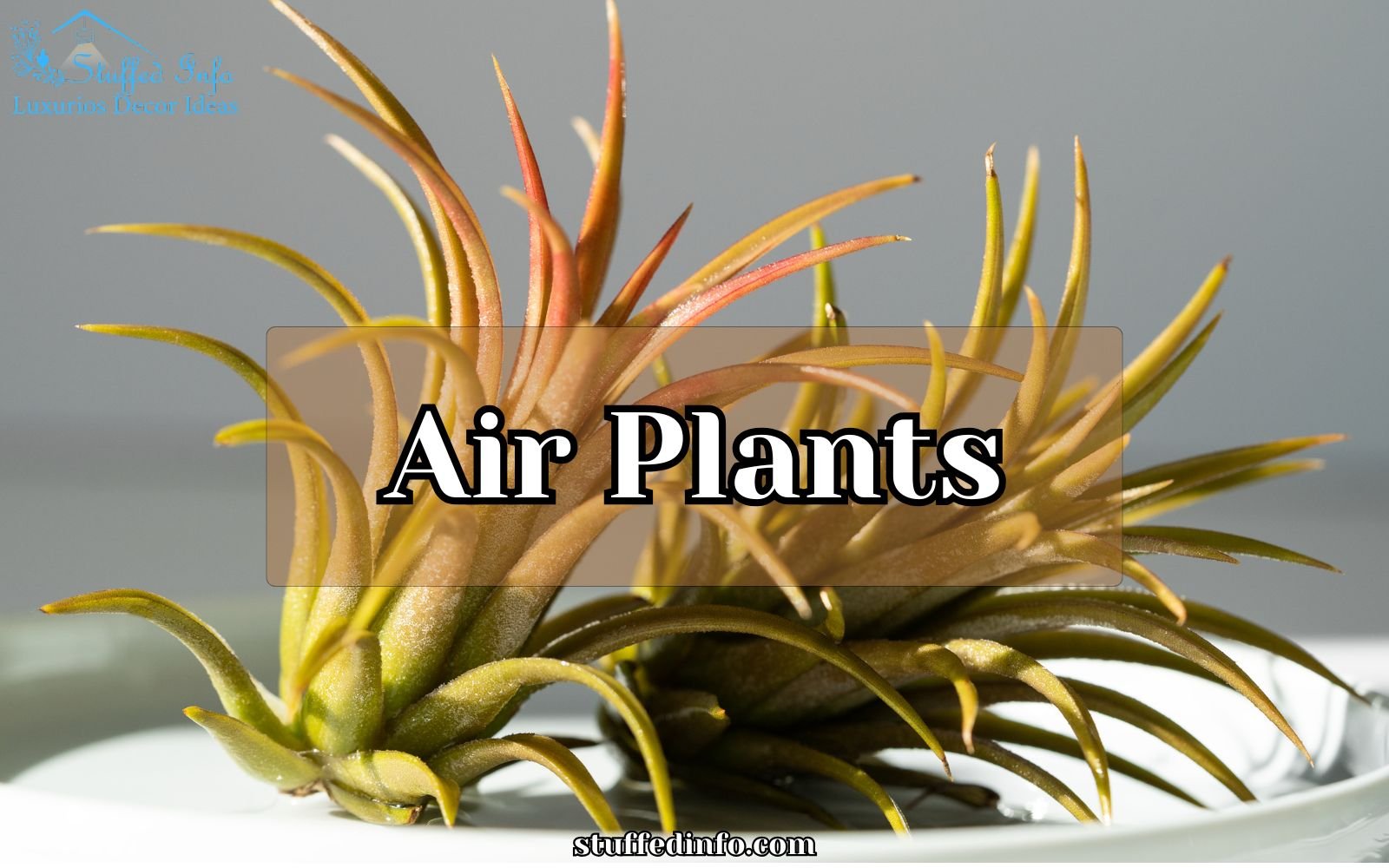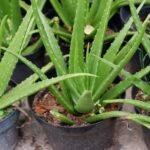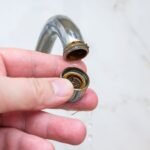If you are looking for an easy-to-care plant that brings a unique touch to your home, air plants are a perfect choice. These soil-free miracles are ideal for beginners and experienced plant lovers alike, offering low-maintenance care and endless creative display options. In this Blog post, we will dive into types of air plants, Common Pests and Plant Diseases that may affect them, care tips and how to Propagate Air Plants.
Table of Contents
ToggleTypes of Air Plants You Can Grow at Home
Here are some popular types of air plants that you can grow at home:
- Tillandsia Ionantha: Recognizable by its vibrant blue or purple flowers and small, silvery-green leaves.
- Tillandsia Andreana: This variety has delicate, needle-like leaves and hails from Colombia.
- Tillandsia Maxima: Larger than most, with coral-colored foliage and eye-catching purple blooms.
- Tillandsia Usneoides (Spanish Moss): Known for its long, curly leaves that drape beautifully, perfect for hanging displays.
- Tillandsia Cyanea (Pink Quill Plant): Features striking pink bracts and narrow dark green leaves, a colorful addition to your decor.
- Tillandsia Xerographica: A stunning, large-leafed variety often used in terrariums.
- Tillandsia Capitata: With larger fronds, it can grow up to 10-12 inches, making a great centerpiece.
These unique plants don’t just look exotic; they’re also quite hardy, making them ideal for indoor settings.
Common Pests Affecting Air Plants
As with any plant, these plants also get attacked by pests. These pests can thus interfere with their growth and well-being. Fortunately, if you figure out the signs of pest infestations early, you can take proactive steps to protect your plants. Therefore, let’s take a closer look at some of the most common pests and plant diseases and how to tackle them.
Mealybugs
First, we have mealybugs that are tiny, white, cotton-like insects that feed on your plant’s sap.
- Symptoms: If you notice yellowing leaves, leaf drop, and a black, sooty substance (honeydew) on your plant, then probably a mealybug has infested your plant.
- How To Get Rid Of It: To remove mealybugs from your plant, first try to pick them off by hand. You can also add in their natural enemies, like ladybugs that feed on them. If they keep coming back, then using the right pesticide can help solve the problem.
2. Scale Insects
Next we have scale insects that are small, shell-like bumps. You will usually find them on the undersides of leaves.
- Symptoms: If you find yellowing leaves, leaf drop, and honeydew secretion, then probably your plant is infested by them
- Treatment: As with mealybugs, scale insects can be removed manually, or you can also introduce natural predators. Pesticides also help keep these pests at bay.
3. Spider Mites
The third pest that can attack your air plant is a spider mite. These are tiny, sap-sucking pests that spin webs between the leaves.
- Signs: If you find webs between the leaves, speckled or stippled leaves, and leaf drops, then your plant is invaded by spider mites.
- How To Cure: To eliminate spider mites, first rinse your plants with water and then use a miticide. Also, maintaining proper humidity levels can discourage their spider growth.
4. Thrips
Finally, we have the Fourth kind of pest infesting your air plant: thrips. These are slender, tiny insects that feed on plant sap.
- Symptoms: Look for silvery streaks on leaves, black specks (their excrement), and deformed flowers. If you spot any of it, then probably thrips have attacked the plant.
- How To Get Rid: You must begin by first removing any affected parts and then use an insecticidal soap solution to manage these pests.
To keep air plants healthy, it’s important to know about the pests that can harm them. But pests aren’t the only problem; diseases can also affect air plants, especially if they’re not taken care of properly. Now, let’s look at some common problems of air plants that they might encounter.
Common Diseases Affecting Air Plants
Pests can invade your plants, but diseases are hidden dangers that can harm them over time. Here are signs to look for and how to treat these common plant problems.
-
Rot
Sometimes if you overwater your plant, it can lead to rotting of the plant stem or leaves.
- Symptoms: Check for either a soft, mushy base or foul odor. Also, discoloration of the leaves is a sign of rot.
- Treatment: To prevent and treat rot, you must watch over your watering routine. Further, you must remove any affected parts immediately to stop the spread of rot.
-
Fungal Infections
As we are all aware, humid conditions cause fungi to grow on the plant’s surface. Here’s how to spot and treat it:
- Spotting It: First and foremost, check for any discolored spots, mold growth, and leaf drop. These are common indicators of a fungal infection.
- How to Treat Them: To save your plant from fungal infection, first reduce the humidity around the plant, then improve air circulation. As an additional step, you must use fungicides to treat the infection. To prevent these problems from arising in the first place, try to keep moisture levels in check.
Now that we’ve covered the most common pests and diseases in air plants , let’s look at the right conditions for their growth. If we are aware of these, we can take care of these plants in a better way:
Air Plant Care Tips
Along with understanding specific pests that attack air plants as well as the diseases affecting them, let’s jump to its special needs. Since they don’t grow in soil, they have unique growth requirements. Check how to maintain your plant.
1. Light for Healthy Growth
Air plants prefer bright, indirect light and must be protected from direct sunlight, which can scorch their leaves. Here’s how to provide them right amount of light.
- Use Filtered Sunlight: Filter the sunlight with the help of a sheer curtain, as it can diffuse harsh direct sunlight.
- Artificial Light: If your place has limited or no natural light, then use fluorescent lighting. However, keep them about 6–12 inches from a light source for around 12 hours a day.
- Avoid Full Shade: While these plants need only lower light levels, they still won’t thrive in complete shade. Thus, inadequate light may lead to poor growth and dull coloring.
2. Water Requirements
Now, watering them is also quite tricky as they donot grow in soil. Here’s how to water an air plant in the right way:
- Soaking: You must submerge your air plants in water for 20-30 minutes once a week.
- Misting: Though they are submerged only once a week, still mist them1-2 times weekly. especially if the air is dry. If you are not submerging but only misting your plant, then do it at least 3-4 times weekly.
- Drying: Yes, this is also important. So, after watering your plant , gently shake off excess water and place it upside down on a towel to dry in a well-ventilated area. Further, let them dry completely to prevent any rot.
Pro Tip: Rainwater or filtered water is preferable, as tap water often contains chemicals that may harm them.
3. Air Circulation for Optimal Growth
Good airflow is crucial for air plants, as this will imitate their natural environment conditions where they are exposed to fresh breezes.
- Location: Firstly, place your plants near open windows or in rooms with fans to ensure proper airflow.
- Avoid Enclosed Terrariums: If using a glass container to grow your plant, make sure it has openings. Also, make sure to open it periodically to allow airflow.
- Use of Fans: Do not forget to use a ceiling or small desk fans to improve circulation in your home.
4. Temperature and Humidity Considerations
Air plants love warmth and can grow properly between 50°F and 90°F (10°C to 32°C) of temperatures. However, if the temperatures are below 45°F (7°C), it can harm them. Also keep following in mind:
- Consistency: Try to keep a stable temperature range, as sudden fluctuations can stress the plants.
- Indoor Settings: Next, room temperature is usually sufficient, but keep your plants away from direct sources of heat or cold drafts.
- Seasonal Adjustments: Furthermore, you must make adjustments according to the seasons. For instance, in winter, avoid placing your plant near cold windows. Consequently, in summers, you must ensure adequate humidity and airflow.
5. Fertilizer
Although air plants don’t grow in soil, they benefit from occasional fertilization to support healthy growth.
- Type of Fertilizer: Use a specialized air plant or bromeliad fertilizer or a diluted balanced houseplant fertilizer (e.g., 10-10-10).
- How To Fertilize: Add the diluted fertilizer to water during soaking or misting sessions. Always use rainwater or filtered water for dilution.
- How Much To Use: You must fertilize the air plant once a month during the growing season (spring and summer). Moreover, reduce or stop fertilizing them in fall and winter.
Tip: Avoid overfertilizing your plant, as it can cause more harm, so use it only sparingly.
Where to Place Air Plants for Proper Growth?
Where you place your air plants is essential for air plant growth so that they are healthy and full of vitality.
- Bright, Indirect Light: Place them near east- or west-facing windows or use sheer curtains for southern exposures.
- Bathrooms and Kitchens: Additionally, high-humidity spots like bathrooms and kitchens are perfect, provided there’s indirect light.
- Artificial Light: Alternatively, place them 6–12 inches from artificial light sources for about 12 hours daily.
- Airy Space: At last, keep them in well-ventilated spaces to prevent rot and encourage drying after watering.
Creative Tip: Try hanging terrariums, wall mounts, or placing air plants on shelves in well-lit, ventilated areas. Now is the time to check how to propagate air plants once you have healthy growth.
How To Propagate Air Plants
When your air plants are healthy, they can grow little plants called “pups” at the base. Here’s how you can grow a full plant from these tiny pups:
- Find Mature Pups: First wait until the pups are about one-third the size of the main plant before taking them away. This makes sure the pups are strong enough to live on their own.
- Remove the Pups: Next, after selecting a mature pup, pluck it from the main plant. For this, hold the main plant gently and pull back the leaves of the pup. If needed, use a clean, sharp knife or scissors to cut it off at the base.
- Let the Pup Heal: Now after you’ve separated it, put the pup in a dry, shady place for a few days to let the cut heal. This is important to avoid rot.
- Prepare the New Plant: Finally, put the pup in a bright area with indirect light and good humidity. Mist it lightly every few days until it starts to grow.
Although you can also grow air plants from seeds, this takes a lot of time and needs specific conditions. Most people prefer to use pups because it’s faster and simpler, helping your air plant collection grow quicker.
Conclusion
To sum up, air plants are low-maintenance plants for any indoor space. However, they need unique care needs as they do not grow in soil and can be infested with common pests and plant diseases. However , by following the above air plant care tips on light, watering, air circulation, and regular maintenance, you can keep your plant thriving for years.
FAQ
- Is it safe to use chemical pesticides on air plants?
No, you should avoid harsh chemical pesticides, as they can harm the delicate structure of air plants. Therefore, you must opt for organic solutions whenever possible.
- What conditions lead to common diseases in air plants?
Overwatering, poor air circulation, and low light conditions can all lead to diseases in air plants.
- How long do air plants typically live, and can pests shorten their lifespan?
Air plants can live for several years, but pests and diseases can significantly shorten their lifespan. Thus, managing the pests and disease and regular care are essential for their long life.







